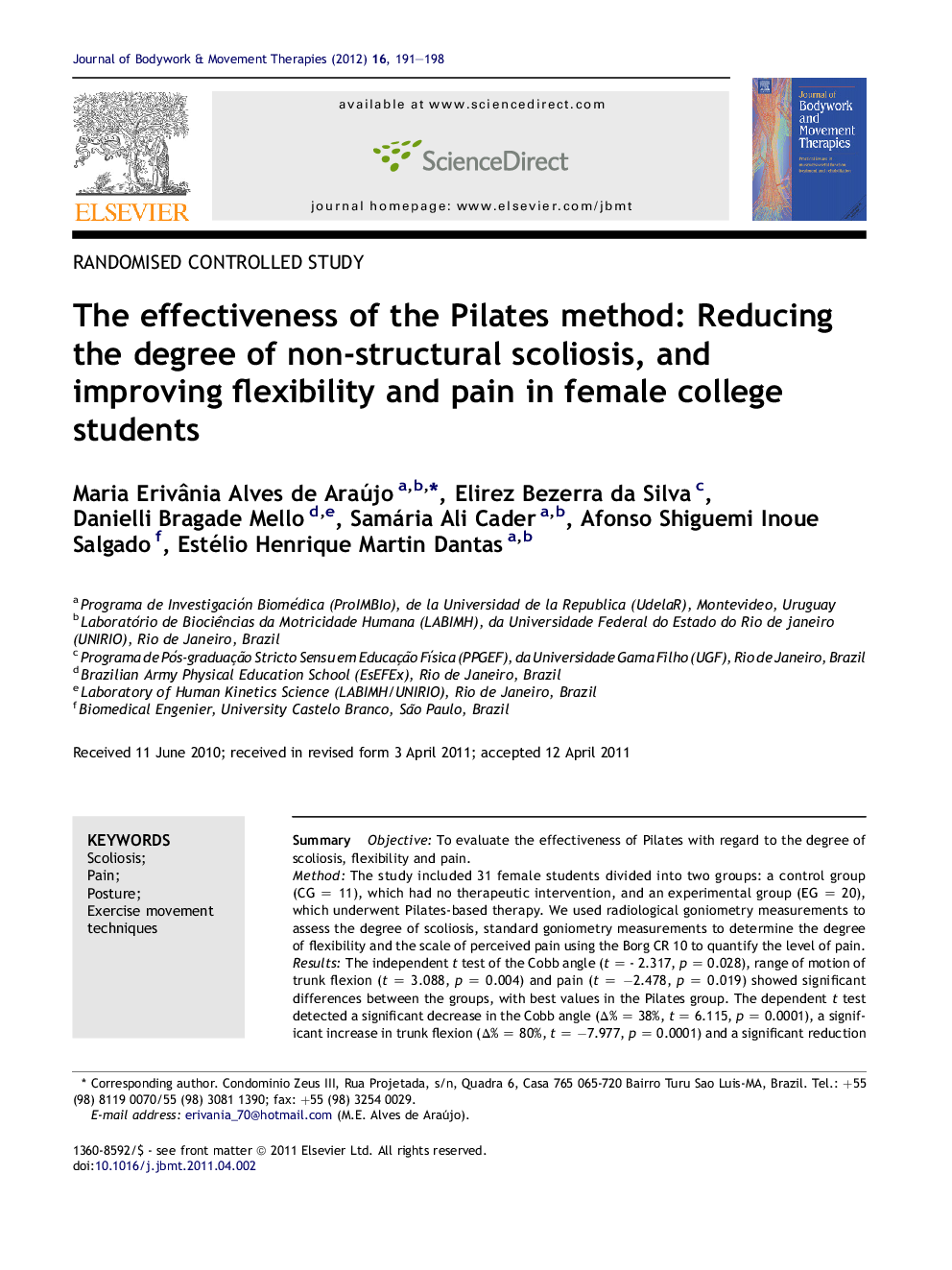| Article ID | Journal | Published Year | Pages | File Type |
|---|---|---|---|---|
| 2619134 | Journal of Bodywork and Movement Therapies | 2012 | 8 Pages |
SummaryObjectiveTo evaluate the effectiveness of Pilates with regard to the degree of scoliosis, flexibility and pain.MethodThe study included 31 female students divided into two groups: a control group (CG = 11), which had no therapeutic intervention, and an experimental group (EG = 20), which underwent Pilates-based therapy. We used radiological goniometry measurements to assess the degree of scoliosis, standard goniometry measurements to determine the degree of flexibility and the scale of perceived pain using the Borg CR 10 to quantify the level of pain.ResultsThe independent t test of the Cobb angle (t = - 2.317, p = 0.028), range of motion of trunk flexion (t = 3.088, p = 0.004) and pain (t = −2.478, p = 0.019) showed significant differences between the groups, with best values in the Pilates group. The dependent t test detected a significant decrease in the Cobb angle (Δ% = 38%, t = 6.115, p = 0.0001), a significant increase in trunk flexion (Δ% = 80%, t = −7.977, p = 0.0001) and a significant reduction in pain (Δ% = 60%, t = 7.102, p = 0.0001) in the EG. No significant difference in Cobb angle (t = 0.430, p = 0.676), trunk flexion, (t = 0.938p = 0.371) or pain (t = 0.896, p = 0.391) was found for the CG.ConclusionThe Pilates group was better than control group. The Pilates method showed a reduction in the degree of non-structural scoliosis, increased flexibility and decreased pain.
